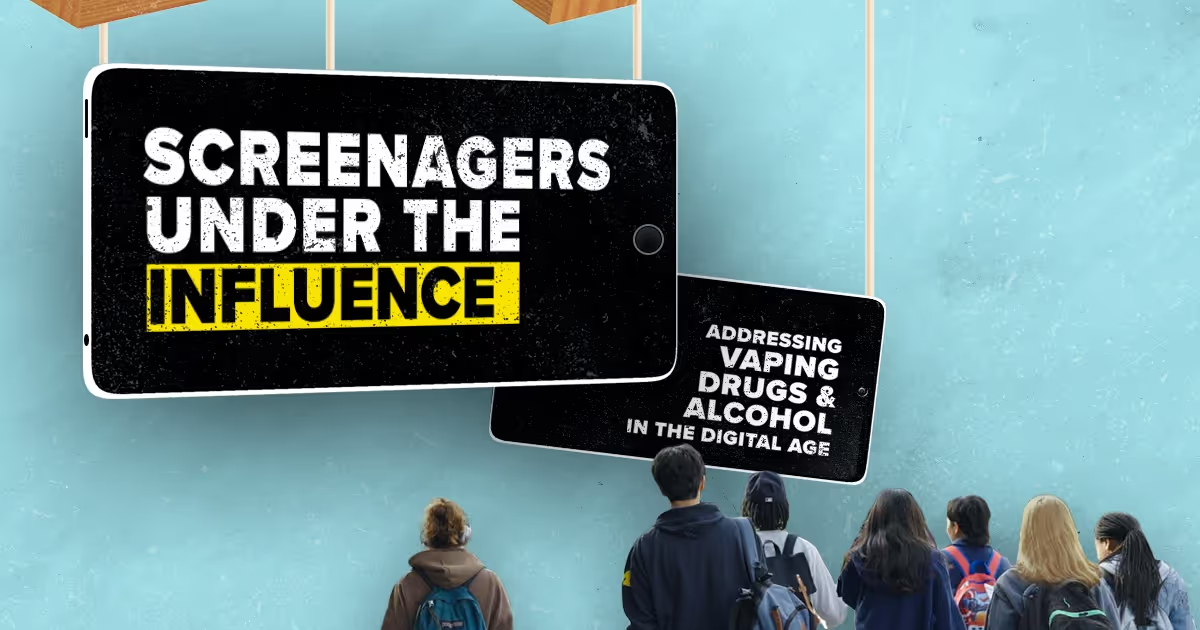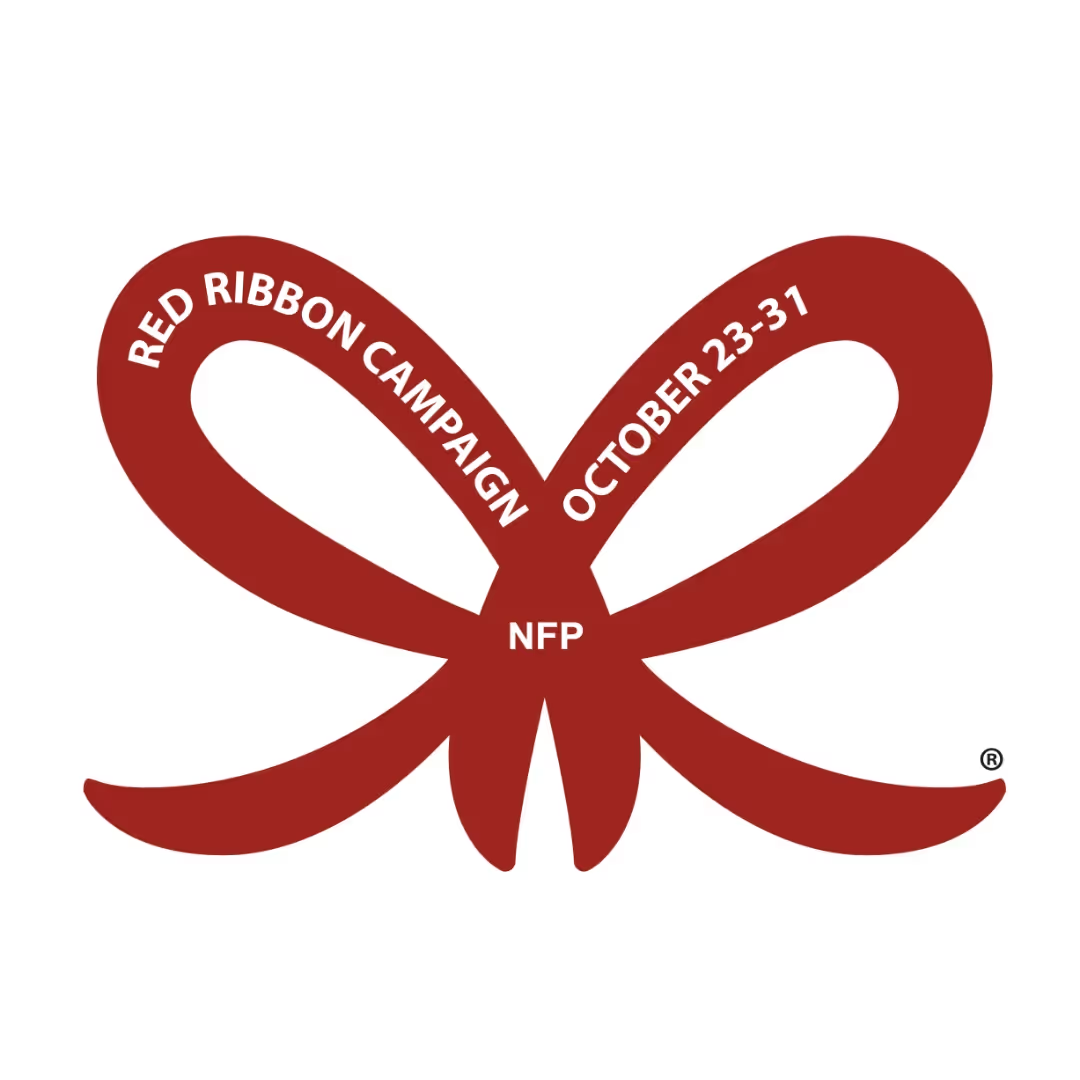


Data, data, data. Good data is essential for creating interventions that help youth grow up in the most healthy and life-affirming way possible.
Another benefit of well-collected data is that it lets us talk about charged topics with our kids with a more neutral attitude making for more productive interactions.
Interactive data is better than regular data, and I have just that today! No matter your age, stick with me on this one and keep reading.
Today, I am sharing data about drug use and teens. As I have stated in multiple ways, be it film, past blogs, and podcasts, the intersection of screen time and teens' attitudes and decisions around substance use is profound. Given the bombardment of substance-promoting messages online, we do a great service when we spend time discussing substances with our youth.
I want to share important findings from the research team at the University of Michigan in their latest Monitoring the Future report. Since 1975, they have been doing anonymous, nationally representative surveys of 8th, 10th, and 12th-grade students on many topics, the bulk of which centers on substance use.
Here is how this interactive data is perfect for talking about substance use, including alcohol, with youth in your life, be it your child, your students, you name it.
You will see that rates of use of many substances, including alcohol, have fallen over the years. This is great news. And yet, we still have a ways to go.
Why have rates fallen? There are many reasons, such as public health campaigns, to educate on the risks of things like alcohol. Other reasons include teens getting together in person and less due to our tech revolution. Other things include stricter access. And other reasons worth contemplating with youth.
Another important thing about this data is that it gives youth a sense of true norms. Let's say they are in 10th grade and are smoking weed. With the data, they see that the majority of teens their age do not do so. Such information can influence a person’s decisions around use.
Learn more about showing our movies in your school or community!
Join Screenagers filmmaker Delaney Ruston MD for our latest Podcast

Learn more about our Screen-Free Sleep campaign at the website!
Our movie made for parents and educators of younger kids
Learn more about showing our movies in your school or community!
One other point I want to cover is the findings in the annual report.
This is the first year the survey has included Delta-8 THC, a psychoactive substance. While Delta-9 THC is known for its psychoactive effects in cannabis, Delta-8 THC, which is also psychoactive, can be derived from hemp. Hemp is federally legal, raising concerns that access to Delta-8 products might be easier for teenagers compared to traditional cannabis. Typically found in small quantities, Delta-8 is often synthesized from hemp.
In the report, 11.4% of 12th graders reported past-year delta-8 THC use in 2023. Thus, this topic warrants discussion.
I found on this quote on The National Institute of Drug Abuse’s website:
“… research has reported a dramatic rise in overdose deaths among teens between 2010 to 2021, which remained elevated well into 2022 according to a NIDA analysis of CDC and Census data. This increase is largely attributed to illicit fentanyl, a potent synthetic drug, contaminating the supply of counterfeit pills made to resemble prescription medications.”
Please make sure to talk with youth about this point as well! In Screenagers Under The Influence, we address this topic through a powerful story.
Learn more about showing our movies in your school or community!
Join Screenagers filmmaker Delaney Ruston MD for our latest Podcast

Learn more about our Screen-Free Sleep campaign at the website!
Our movie made for parents and educators of younger kids
Join Screenagers filmmaker Delaney Ruston MD for our latest Podcast
With new videos posted every Tuesday and Friday, be sure to subscribe to our YouTube Channel! Here's our latest videos!
As we’re about to celebrate 10 years of Screenagers, we want to hear what’s been most helpful and what you’d like to see next.
Please click here to share your thoughts with us in our community survey. It only takes 5–10 minutes, and everyone who completes it will be entered to win one of five $50 Amazon vouchers.
Data, data, data. Good data is essential for creating interventions that help youth grow up in the most healthy and life-affirming way possible.
Another benefit of well-collected data is that it lets us talk about charged topics with our kids with a more neutral attitude making for more productive interactions.
Interactive data is better than regular data, and I have just that today! No matter your age, stick with me on this one and keep reading.
Today, I am sharing data about drug use and teens. As I have stated in multiple ways, be it film, past blogs, and podcasts, the intersection of screen time and teens' attitudes and decisions around substance use is profound. Given the bombardment of substance-promoting messages online, we do a great service when we spend time discussing substances with our youth.
I want to share important findings from the research team at the University of Michigan in their latest Monitoring the Future report. Since 1975, they have been doing anonymous, nationally representative surveys of 8th, 10th, and 12th-grade students on many topics, the bulk of which centers on substance use.
Here is how this interactive data is perfect for talking about substance use, including alcohol, with youth in your life, be it your child, your students, you name it.
You will see that rates of use of many substances, including alcohol, have fallen over the years. This is great news. And yet, we still have a ways to go.
Why have rates fallen? There are many reasons, such as public health campaigns, to educate on the risks of things like alcohol. Other reasons include teens getting together in person and less due to our tech revolution. Other things include stricter access. And other reasons worth contemplating with youth.
Another important thing about this data is that it gives youth a sense of true norms. Let's say they are in 10th grade and are smoking weed. With the data, they see that the majority of teens their age do not do so. Such information can influence a person’s decisions around use.
One other point I want to cover is the findings in the annual report.
This is the first year the survey has included Delta-8 THC, a psychoactive substance. While Delta-9 THC is known for its psychoactive effects in cannabis, Delta-8 THC, which is also psychoactive, can be derived from hemp. Hemp is federally legal, raising concerns that access to Delta-8 products might be easier for teenagers compared to traditional cannabis. Typically found in small quantities, Delta-8 is often synthesized from hemp.
In the report, 11.4% of 12th graders reported past-year delta-8 THC use in 2023. Thus, this topic warrants discussion.
I found on this quote on The National Institute of Drug Abuse’s website:
“… research has reported a dramatic rise in overdose deaths among teens between 2010 to 2021, which remained elevated well into 2022 according to a NIDA analysis of CDC and Census data. This increase is largely attributed to illicit fentanyl, a potent synthetic drug, contaminating the supply of counterfeit pills made to resemble prescription medications.”
Please make sure to talk with youth about this point as well! In Screenagers Under The Influence, we address this topic through a powerful story.
With new videos posted every Tuesday and Friday, be sure to subscribe to our YouTube Channel! Here's our latest videos!
Sign up here to receive the weekly Tech Talk Tuesdays newsletter from Screenagers filmmaker Delaney Ruston MD.
We respect your privacy.
Data, data, data. Good data is essential for creating interventions that help youth grow up in the most healthy and life-affirming way possible.
Another benefit of well-collected data is that it lets us talk about charged topics with our kids with a more neutral attitude making for more productive interactions.
Interactive data is better than regular data, and I have just that today! No matter your age, stick with me on this one and keep reading.
Today, I am sharing data about drug use and teens. As I have stated in multiple ways, be it film, past blogs, and podcasts, the intersection of screen time and teens' attitudes and decisions around substance use is profound. Given the bombardment of substance-promoting messages online, we do a great service when we spend time discussing substances with our youth.
I want to share important findings from the research team at the University of Michigan in their latest Monitoring the Future report. Since 1975, they have been doing anonymous, nationally representative surveys of 8th, 10th, and 12th-grade students on many topics, the bulk of which centers on substance use.
Here is how this interactive data is perfect for talking about substance use, including alcohol, with youth in your life, be it your child, your students, you name it.
You will see that rates of use of many substances, including alcohol, have fallen over the years. This is great news. And yet, we still have a ways to go.
Why have rates fallen? There are many reasons, such as public health campaigns, to educate on the risks of things like alcohol. Other reasons include teens getting together in person and less due to our tech revolution. Other things include stricter access. And other reasons worth contemplating with youth.
Another important thing about this data is that it gives youth a sense of true norms. Let's say they are in 10th grade and are smoking weed. With the data, they see that the majority of teens their age do not do so. Such information can influence a person’s decisions around use.

This week is Red Ribbon Week, the nation’s longest-running youth drug-prevention program — and I can’t think of a more important time to talk about a new, dangerous substance spreading fast among teens called 7-OH that's derived from the kratom plant.
READ MORE >
Research shows that adolescent substance initiation — teens trying smoking or drinking for the first time — spikes during the summer. More downtime often means more screen time, which brings increased exposure to what’s trending. One trend that’s hard to ignore? A surge in cigarette imagery across films, music videos, and pop culture moments. Even Beyoncé lit up onstage recently. So why is smoking getting a media makeover — and how can we talk to teens meaningfully about it?
READ MORE >
Today I’m sharing a high-level review of what many kids and teens are being shown online in relation to drugs/substances, whether in shows, YouTube, or social media in general. I also offer a technique that you can use for bringing these things up with tweens in your life in a non-confrontational way that is more likely to get them to offer up their opinions on the subject.
READ MORE >for more like this, DR. DELANEY RUSTON'S NEW BOOK, PARENTING IN THE SCREEN AGE, IS THE DEFINITIVE GUIDE FOR TODAY’S PARENTS. WITH INSIGHTS ON SCREEN TIME FROM RESEARCHERS, INPUT FROM KIDS & TEENS, THIS BOOK IS PACKED WITH SOLUTIONS FOR HOW TO START AND SUSTAIN PRODUCTIVE FAMILY TALKS ABOUT TECHNOLOGY AND IT’S IMPACT ON OUR MENTAL WELLBEING.
